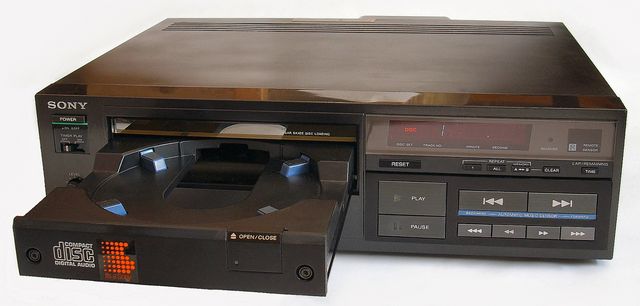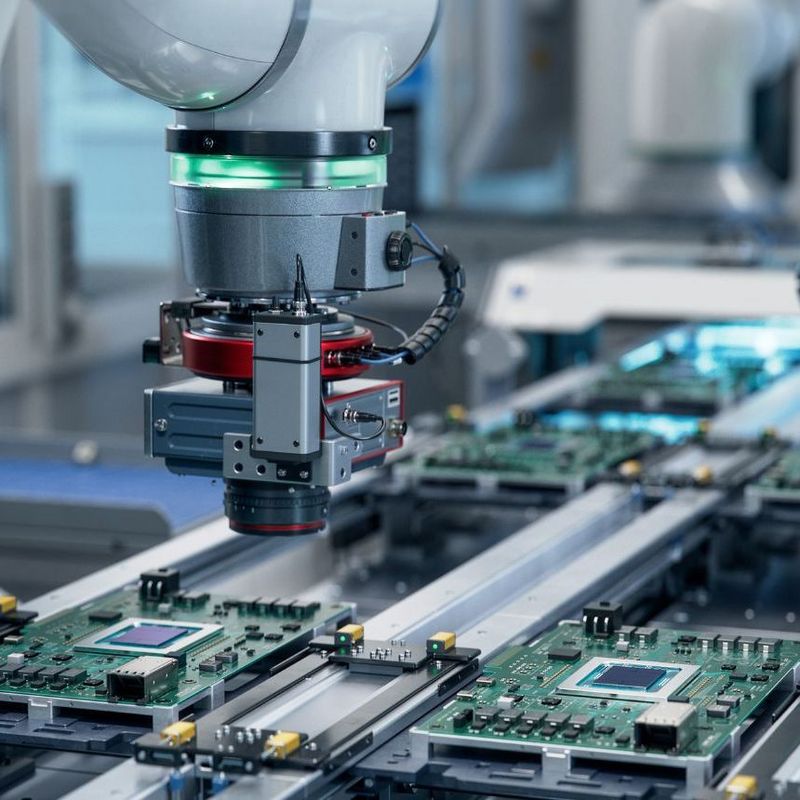22 February 2024
It all begins with Thomas Alva Edison: It is his phonograph which makes it possible to record and play back sounds for the first time at the end of the 19th century. The invention and development of the gramophone record makes listening to and enjoying music accessible to the masses. But only short recordings are possible, and there is no way to edit them. But help is forthcoming from Europe: first from Denmark, and then from Germany.
While the shellac disc is busy taking the world by storm, an experimental engineer from the telephone company in Copenhagen is working on an alternative method of sound recording. On 2 December 1898, Valdemar Poulsen patents his invention: His “telegraphone” uses a magnetised steel wire to record sound. It is now possible to record pieces of music lasting between 20 and 30 minutes – a real quantum leap in comparison to the shellac disc, which can at this point accommodate a mere four minutes’ worth of sound. That being said, the recordings are faint and beset by background noise, and the wire is thoroughly impractical to use. Other inventors will go on to develop the principle further in the decades to come, and the wire will be replaced.
In 1928, Austro-German engineer Fritz Pfleumer patents a type of paper tape coated with iron oxide powder as a sound-recording medium. He cedes the rights of use to the “Allgemeine Elektricitäts-Gesellschaft” (AEG). This company unveils its “magnetophone” to an astonished public at the Great German Radio Exhibition in August 1935. A single reel is capable of accommodating up to 20 minutes of playing time, which is sensational for the time. The magnetic tape comes courtesy of the “Badische Anilin- und Sodafabrik”, or BASF for short. As the paper tape is prone to tearing, BASF develops the world’s first plastic tape in 1936.
Music with magnets
An electric motor guides this tape past a tape head which is subject to AC voltage, like the signal from a microphone. This gives rise to magnetic fields of varying strengths which are stored on the tape as differently magnetised sections. Pressing the “Start” button causes the tape to run past the playback head, where the different magnetisation conditions induce variable currents. These currents are amplified and
© Wikipedia, https://de.wikipedia.org/wiki/Magnetophon#/media/Datei:D_AEG_Magnetophon_KL-15_Geraet.jpgSound storage made by AEG: The magnetophone wows visitors at the Great German Radio Exhibition.
converted by a loudspeaker into acoustic signals: The tape plays back music.
Even though the device weighs a good 100 kilos, it is nonetheless now possible to make mobile recordings. Albeit recordings which have to contend with loud clanking and hissing noises. A problem that physicists Walter Weber and Hans-Joachim von Braunmühl solve in 1940 with their accidental discovery of high-frequency premagnetisation.
The all-conquering magnetic tape
Starting at the end of the 1930s, preproduced radio show are recorded on magnetic tape. In the early 1950s, more and more recording studios and radio stations switch over to magnetic tape, which gradually becomes the gold standard. This is because the magnetised tapes make it possible to record long pieces of music in high quality which can now also be cut and edited. Gone are the days in which a recording would have to be recorded from scratch every time the musician or speaker made a mistake. Bum notes or stutters can simply be cut, and extracts from two or more recordings can be spliced together to make one single ideal one.
Among private listeners, however, scattered early adopters and technophiles are the only ones who are in a position to challenge the supremacy of the gramophone. This is because the equipment is more expensive and less easy to operate. The loose end of the tape must be laboriously threaded back into the machine every time the owner wants to listen to a recording. And rather than simply turning a disc over, the tape must be rewound at every change of sides to allow the audience to carry on listening.
Music in your pocket
In 1960, a team at the Philips factory in Hasselt, Belgium, starts working on a tape medium that is both practical and easy to handle. The team under Lou Ottens comes up with an idea for a robust sound carrier that members of the public can simply pick up and stick in their jacket pocket or handbag. On 28 August 1963, Philips unveils the result of its labour at the Radio Exhibition in Berlin: The compact cassette tape plus a device to play it – the cassette recorder. The sound quality is not amazing to start with, but this all changes with the development of Dolby-B noise reduction in 1968.
The small compact cassette revolutionises and democratises the way music is recorded and listened to. Starting with the advent of the practical radio-cassette recorder in the 1970s, absolutely anyone can now record their favourite song from the radio. Or record an LP onto a tape which, thanks to the development of twin tape decks, can itself now be copied and given as a gift. This is all very much to the chagrin of the music industry, which takes up arms against the home tapers in the early 1980s under the banner “home taping is killing music”. But the tapers are much too busy trying to win over the hearts of their crushes with home-made tape mixes to be even remotely bothered by this.
© Wikipedia, https://commons.wikimedia.org/wiki/File:Philips_EL3302.jpg1963 marks the start of the cassette recorder - Philips leads the way as a company.
Onto the streets
The compact cassette also liberates music from the confines of the living room or child’s bedroom. Philips launches the first ever car radio with cassette player as early as 1968. Starting in 1975, battery-operated ghetto blasters at street corners and in public squares lay down the beat for the emergence of breakdance and hip-hop culture. And it is Sony which launches the first Walkman in 1979. This completes the mobilisation of music and becomes a (status) symbol for a new way of life. Cocooned in the world of their own soundtracks, thousands of young people float through the streets of cities, towns and villages – sometimes on roller skates, sometimes on foot.
Digitalisation in the living room
But even as the Walkman is still wowing the world, the next revolutionary sound carrier is introduced as early as 1981. Philips, Sony and Polygram join forces to present the silver Compact Disc. This little plastic disc stores information in digital form in microscopic indentations which are then read by a laser and converted electronically into an analogue sound signal.
© Wikipedia, https://de.wikipedia.org/wiki/Walkman#/media/Datei:Walkman_TPS-L2.jpgThe first cassette-based Walkman from Sony is launched in 1979.
Unlike the LP, the new CD is therefore not subject to wear during playback, takes up less space and provides a quality of sound that has never before been achieved. This is also due to the digital recording and editing of analogue sound signals which gradually takes over the world of recording studios from the end of the 1970s. Converting sound signals into noughts and ones gets rid of the tape hiss and other quality impairments that arise with analogue recording methods. These recordings can quickly and easily be edited on a computer without any need to cut the source material in the literal sense of the word. This makes music production both easier and cheaper while simultaneously enhancing its quality.
The Compact Disc hits the European market in 1983. In the same year, Philips unveils the car CD player, and Sony releases the first portable CD player in 1985. CD sales overtake those of vinyl records as early as 1988. For the music industry, everything in the garden is rosy. The same album can now be sold twice to those music lovers who want to digitalise their record collections.
Whereas the Digital Audio Tape, or DAT for short, launched by Sony as the successor to the compact cassette in 1987, and the MiniDisc first offered by the Japanese firm in 1992 find their niche primarily as mobile recording options for professionals, CD collections continue to grow in living rooms the world over, as do the profits pouring into the music industry.
All is well – until, that is, the CD burner first becomes affordable at the end of the nineties. CD burning immediately becomes the national sport. This is the shadow side of digital music storage: Unlike cassettes, copying CDs does not come with any loss of quality. Every copy sounds just as good as the original.
Songs shrinks, but the consequences grow
At the same time, bigger Internet bandwidths are becoming more affordable, and the storage formats are shrinking. This is another difference between digital and analogue music recording: Data can be compressed – they can be shrunk. As early as 1982, a team under Karlheinz Brandenburg at the “Fraunhofer-Institut für Integrierte Schaltungen in Erlangen” starts working on a method to store music with a very low data rate. It is in 1991 that the MPEG-1 Audio Layer III is unveiled for the first time, to be renamed the MP3 four years later as the result of a survey within the institute.
This compression method uses psycho-acoustic effects – the way in which our hearing registers sounds. For instance, we can only distinguish between two notes from a certain minimum pitch, and it is difficult or impossible to pick up quiet sounds after hearing very loud ones. MP3 files simply “filter” these imperceptible sounds out as a means of creating music files that take up very little space but can hardly, if at all, be distinguished from the original recording.
From sharing to streaming
Thanks to MP3, songs and whole albums can now easily be transmitted via the Internet. Sharing platforms like Napster or eDonkey proliferate, shaking the whole music industry to its foundations. On 23 October 2001, Apple introduces the iPod, on which a staggering 1,000 songs can be stored courtesy of MP3 compression. In place of individual albums, as was the case with the Walkman, the iPod now makes it possible to carry around a whole record collection.
Many people are now back on the right side of the law and can use their phones to access more music than they could ever possibly own. Streaming market leader Spotify alone is used by some 570 million people around the world, more than 220 million of whom pay a subscription. In the US, almost 85 percent of all music sales are accounted for by streaming services.
© Wikipedia, https://commons.wikimedia.org/wiki/File:3G_ipod_in_dock.jpgApple's iPod, launched in 2001, can store 1,000 songs.
Vinyl makes a comeback
These days, hardly anyone wants a sound carrier you can actually touch. With one exception: Vinyl sales in the US have increased tenfold in the last ten years, even overtaking CDs once more for the first time since 1987. When it comes to deciding on your sound carrier, what matters is what you see, intuit and feel: Although the CD killed off the album cover, an LP is a great way to showcase cover art. And most people entered into a kind of marriage of convenience with the CD in its plastic box, only to dump it unceremoniously when streaming services came along. For some people, on the other hand, the LP was – or is becoming – their first great love. Something that needs to be handled with care and comes complete with all those little flaws and faults that no loving relationship would ever be without.







